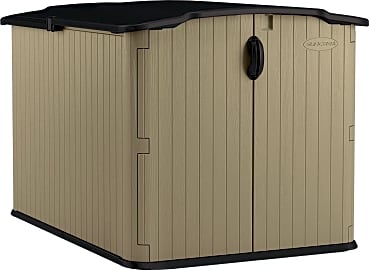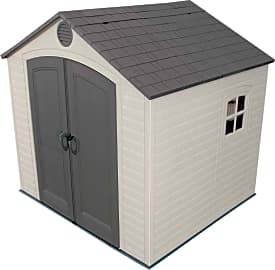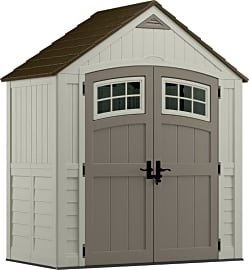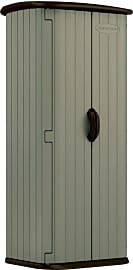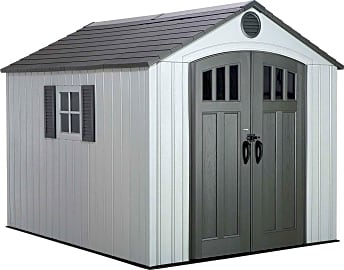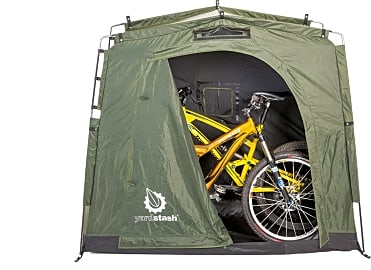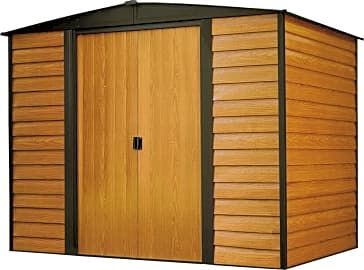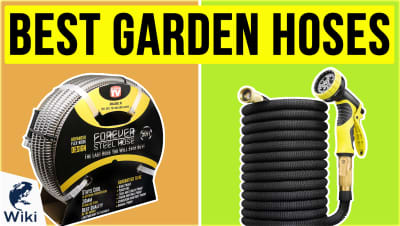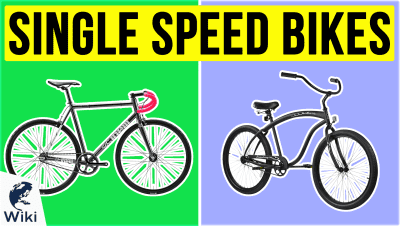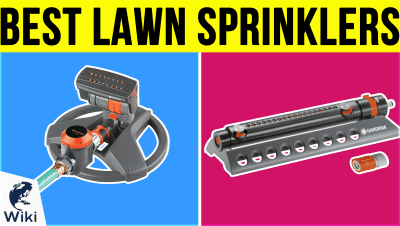The 10 Best Storage Sheds

This wiki has been updated 41 times since it was first published in April of 2015. Don't let the bicycles, lawn equipment, pool supplies, or random junk that you just can't bring yourself to throw away fill up your garage and force you to leave your car outside. These storage sheds come in all different shapes and sizes for keeping various amounts of gear safe and secure from the elements. No matter what your budget is, you should find something to suit your needs. When users buy our independently chosen editorial selections, we may earn commissions to help fund the Wiki.
Editor's Notes
November 26, 2020:
While we've kept the Rubbermaid Outdoor as a top pick, we've selected a bundle that comes with shelves, instead of the shed-only choice; it's a good value for the price, and saves you from having to find a variety of hangers for your yard tools, hose, and gardening accessories.
Popular alternatives still come from Suncast and Lifetime, including the Suncast Glidetop and the Suncast Utility for those who need only a little storage space and the Lifetime 60202 for those who need a lot. Or, if you'd prefer an option that is entirely metal, rather than a high-density plastic, look instead to the Arrow Hamlet. With three sizes available, it should work for a variety of users, although it's certainly not the most eye-catching model out there.
If your storage needs are temporary, then we still think the YardStash III will suit. In fact, we've kept it instead of opting for the higher-priced YardStash IV. The latter currently suffers from availability issues, but besides that, it's likely that investing more in what is basically a tent may not be your best bet, especially if you have long-term storage needs. Of course, the point is arguable, but sheds these days are relatively affordable, so there's no need to skimp on protecting your bicycle, outdoor gear, or tools.
And speaking of affordability, we removed the Keter Factor and instead selected the Keter Manor. The Manor's styling is a little more fresh and contemporary, although both do offer weather-resistant materials that won't rust or rot.
April 15, 2019:
Whether due to extended exposure to the sun or to water damage, we discovered too many complaints about warping with the Rubbermaid Small to be confident in its quality, so we eliminated it from the list. We also removed the Rubbermaid Outdoor Horizontal, as it was clear — based on a multitude of user reports — that this model is not effective at keeping items stored inside dry and safe from precipitation.
There is a newer version of the Lifetime 6405 available, so we updated the list to reflect this. The updated model offers similar durability and stability, but the sleek windows on the doors are an upgrade, as is the attractive new trim and the slider lock mechanism on the doors.
Added the Rubbermaid Outdoor, which is heavy-duty enough to accommodate riding lawnmowers and rugged ladders. Users report that assembly is straightforward (if a bit labor-intensive), and several pointed out that you’ll want to make sure the ground is very level to ensure stability. The Lifetime 6411 was another new addition — quite affordable for the amount of storage space it provides, which includes a variety of shelves for hanging and organizing tools and other miscellaneous items.
Special Honors
Summerwood 8' x 12' Dune The Summerwood 8' x 12' Dune offers you nearly 100 square feet of extra space to stash your stuff, but more than that, it provides an aesthetic appeal that many others can't match. Both its concealed double doors and the roof overhang give it an architectural feel, helping to justify its relatively high price. summerwood.com
Best Barns Ravenna You'll have more than enough storage room with the Best Barns Ravenna, which boasts a full second floor loft that's easy to access with the included L-shaped stairs. In fact, there's so much space that you could use this structure as an office or workshop, especially since its framing allows for the addition of insulation and drywall. barnkits.com
How To Choose a Proper Storage Shed
A shed should fit well inside your yard without appearing overly large or out of place.
Storage sheds come in a variety of makes, shapes, and sizes. And you may need to do some research in order to find a shed that's right for you. First, give some thought to what you plan on placing inside any storage shed. How much equipment do you own? Are there any lightweight items that you could hang upon a hook, or a rack? More importantly, how much vacant space do you have? A shed should fit well inside your yard without appearing overly large or out of place.
If you're purchasing a shed for permanent use, be sure that the foundation is securely anchored, and that the exterior is waterproof, weatherproof, and stain-resistant. Depending on where you live and what you're storing, an outdoor shed may need a bolt lock to prevent any break-ins. You may also want to avoid any shed with windows that could tempt potential miscreants.
If you're buying a portable shed for use on vacations, at work sites, or during outdoor events, be sure that the shed is lightweight and fully collapsible, and that its parts will fit adequately into a flatbed or a trunk. In addition, do some research on the base of any portable shed to ensure it won't get blown over by a sudden gale or a passing storm.
Depending on the model, you may want to look into how much assembly a storage shed will require. Certain models come in one piece, or can be constructed by using standard tools and hinges, whereas other sheds may require experienced handymen who are mechanically inclined.
The Myriad Benefits of Owning a Storage Shed
Owning a shed allows you to keep all of your landscaping equipment - including lawn mowers, weed wackers, rakes, shovels, and gardening tools - outdoors. Owning a shed also makes it easier to prep for doing lawn work, while simultaneously preventing clumps of grass, gasoline cans, peat moss, and any of their accompanying odors from ever entering your home.
A storage shed can be used for warehousing any number of seasonal items.
Owning a shed allows you to keep more usable space inside of the house for indoor items, and it also keeps sharp instruments and power tools from being within arm's reach of your children. Along those same lines, most top-of-the-line sheds come with their own locks, which means that no one will have access to the shed without consulting with you first.
A storage shed can be used for warehousing any number of seasonal items. Sleds, inner-tubes, snow shovels, and lawn sprinklers are all much better kept inside an enclosed environment, particularly in that they won't be at risk for the type of weather damage that accompanies being strewn about a yard. In a pinch, you can use a shed for temporarily storing household clutter (i.e., kids' toys or extra chairs, etc.) This may come in handy if you're expecting company or having a party.
As an investment, a decent storage shed can increase the value of your home, albeit slightly. Of course, it is up to you as the owner to maintain the shed so that its appraisal value does not diminish over time.
A Brief History of The Shed
The word shed is derived from an Old English term, shad, meaning a separation or a division. While the first known use of the word shed did not occur until the 1400s, the basic concept of a shed has been around since early man's existence.
The man of any household was known to craft furniture and other necessities inside a shed by using chunks of wood and rock and glue and earth.
According to archaeological data, the Ancient Egyptians used special enclosures for storing grain and other food for unspoiled use throughout the year. Several early cliff dwellers were believed to have made storage sheds out of caves several hundred feet in the air, just as early Eskimos were believed to have made small sheds by using blocks of snow which had been hardened into ice.
The Ancient Romans were the first culture to transform a storage shed into a tool shed. The man of any household was known to craft furniture and other necessities inside a shed by using chunks of wood and rock and glue and earth.
During the Feudal Period (i.e., 700-1400), wealthy landowners would build small sheds across their lavish estates. These sheds were used for keeping shovels and other landscaping tools so that the migrant-working peasants would know where to find these items whenever they needed them. Storage sheds were also built across the cotton-belt plantations of Southern America. Certain plantation sheds were even used for hiding slaves who were seeking asylum by way of the Underground Railroad.
Today, sheds look much the same as the have for several centuries. The primary difference being that a modern shed is considered commonplace on any work site, or in any backyard. While modern sheds are primarily used for storage, certain sheds may also be used for agriculture, specialized gardening, chopping wood, and other manual purposes.


